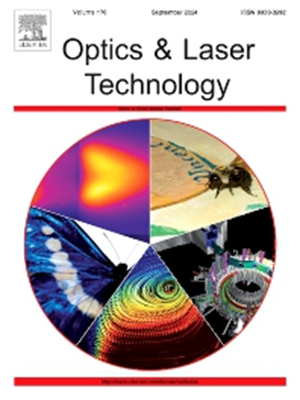Three-dimensional reconstruction precision estimation in multi-view measurement systems
IF 4.6
2区 物理与天体物理
Q1 OPTICS
引用次数: 0
Abstract
The multi-view three-dimensional (3D) reconstruction method is extensively employed across diverse scientific and engineering domains due to its inherent advantages of flexible system configuration and comprehensive view information. While previous research has extensively studied error and uncertainty in the multi-view system, there is a notable gap in understanding the influence of the number of views on the precision of 3D reconstruction. This paper presents a pioneering investigation of the relationship between the number of views and the precision of 3D reconstruction in multi-view systems. Concise precision estimation formulas are derived in normal and convergent camera configurations. Our most significant contribution lies in the novel discovery of the negative power relationship between the precision of 3D reconstruction and the number of views, substantiated by theoretical derivation, numerical simulations, and real experiments. Consequently, our precision estimation formulas and precision law enable the estimation of 3D reconstruction precision without cumbersome calibration processes. This advancement enhances the flexibility and designability of the multi-view 3D reconstruction technique, enabling it to better meet the diverse measurement demands encountered in various fields.
求助全文
约1分钟内获得全文
求助全文
来源期刊
CiteScore
8.50
自引率
10.00%
发文量
1060
审稿时长
3.4 months
期刊介绍:
Optics & Laser Technology aims to provide a vehicle for the publication of a broad range of high quality research and review papers in those fields of scientific and engineering research appertaining to the development and application of the technology of optics and lasers. Papers describing original work in these areas are submitted to rigorous refereeing prior to acceptance for publication.
The scope of Optics & Laser Technology encompasses, but is not restricted to, the following areas:
•development in all types of lasers
•developments in optoelectronic devices and photonics
•developments in new photonics and optical concepts
•developments in conventional optics, optical instruments and components
•techniques of optical metrology, including interferometry and optical fibre sensors
•LIDAR and other non-contact optical measurement techniques, including optical methods in heat and fluid flow
•applications of lasers to materials processing, optical NDT display (including holography) and optical communication
•research and development in the field of laser safety including studies of hazards resulting from the applications of lasers (laser safety, hazards of laser fume)
•developments in optical computing and optical information processing
•developments in new optical materials
•developments in new optical characterization methods and techniques
•developments in quantum optics
•developments in light assisted micro and nanofabrication methods and techniques
•developments in nanophotonics and biophotonics
•developments in imaging processing and systems

 求助内容:
求助内容: 应助结果提醒方式:
应助结果提醒方式:


